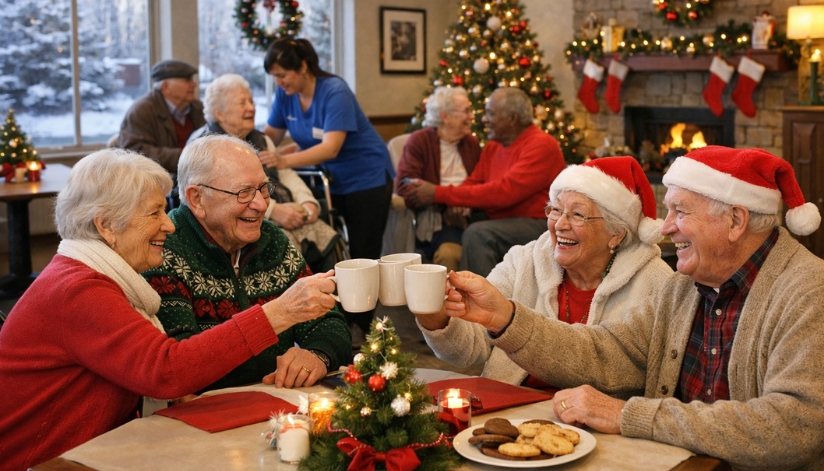Tips For Preventing Falls In Winter And Staying Safe
As temperatures drop and snow and ice accumulate, the risk of slips and falls increases significantly, especially for older adults. Falls can lead to serious injuries, including fractures and head trauma, making fall prevention a top priority during the winter months. Whether you are caring for a loved one or looking for ways to protect yourself, implementing simple safety measures can make a significant difference. Here are the best strategies for preventing falls in winter and ensuring a safer season for all.
Understanding The Risks Of Winter Falls
Slippery sidewalks, hidden ice patches, and snow-covered driveways pose challenges for everyone, but older adults are particularly vulnerable due to decreased balance, reduced vision, and weaker bones. According to the Centers for Disease Control and Prevention (CDC), falls are the leading cause of injury among older adults, and winter conditions only increase the risk. However, with proper precautions, many falls can be prevented.
1. Wear Proper Footwear
One of the easiest and most effective ways to prevent falls in winter is by choosing the right footwear. Follow these guidelines for optimal traction and stability:
- Wear boots or shoes with non-slip, rubber soles that provide good grip.
- Opt for footwear with low heels and sturdy ankle support.
- Avoid smooth-soled shoes, as they increase the likelihood of slipping on icy surfaces.
- Use ice grippers or traction cleats over shoes for added stability on extra slippery days.
2. Walk Safely And With Caution
Changing the way you walk in winter can significantly reduce the risk of falling. Consider these walking techniques:
- Take short, slow steps instead of long strides.
- Keep your hands out of your pockets to help with balance.
- Walk like a penguin by keeping your feet slightly apart and your weight centered over your legs.
- Be mindful of black ice, which is often invisible but extremely dangerous.
- If available, use handrails when walking on stairs or ramps.
3. Keep Entryways And Walkways Clear
Maintaining clear and dry walkways around your home is essential for fall prevention. Ensure safety by:
- Regularly shoveling snow from driveways, sidewalks, and stairs.
- Applying sand or ice melt to reduce slippery conditions.
- Fixing uneven pavement or cracked sidewalks before winter arrives.
- Placing slip-resistant mats at entryways to wipe off snow and ice from footwear.
4. Dress For Warmth And Mobility
Wearing multiple layers helps keep you warm, but bulky clothing can restrict movement and affect balance. Here’s how to dress for both warmth and mobility:
- Choose lightweight, layered clothing that allows for easy movement.
- Wear gloves instead of keeping hands in pockets to maintain balance.
- Use a hat or earmuffs to protect against the cold while keeping vision clear.
5. Use Assistive Devices
If you or a loved one has balance issues, assistive devices can help reduce fall risks. Consider:
- Using a cane or walker for extra stability when walking outdoors.
- Ensuring canes have an ice tip attachment for better grip.
- Carrying a small bag of sand or kitty litter to sprinkle on icy spots.
6. Be Cautious When Getting In And Out Of Vehicles
Winter conditions can make entering and exiting a car hazardous. To avoid falls:
- Park in well-cleared areas whenever possible.
- Hold onto the car door or steering wheel for support.
- Swing both legs out and place both feet on the ground before standing up.
- Avoid carrying too many items at once to keep hands free for balance.
7. Improve Indoor Safety
Preventing falls in winter isn’t just about staying safe outdoors—indoor hazards should also be addressed:
- Keep floors dry by wiping up any snow or ice that’s tracked inside.
- Remove loose rugs or secure them with non-slip pads.
- Install grab bars in bathrooms and near entryways.
- Ensure adequate lighting in hallways and staircases to improve visibility.
8. Stay Active To Maintain Strength And Balance
Regular physical activity strengthens muscles and improves balance, reducing the risk of falls. Recommended exercises include:
- Leg strengthening activities like seated leg lifts and squats.
- Balance exercises such as standing on one foot or heel-to-toe walking.
- Stretching to improve flexibility and prevent stiffness.
9. Plan For Safe Errands And Outings
Winter conditions can make everyday activities more challenging, but planning ahead can help reduce risks:
- Check the weather forecast before heading out.
- Arrange for grocery or prescription delivery services during extreme weather.
- Ask a friend, family member, or neighbor for assistance with errands.
- Use public transportation or rideshare services to avoid walking on slippery sidewalks.
10. Know What To Do If A Fall Occurs
Despite taking precautions, falls can still happen. If you experience a fall:
- Stay calm and assess whether you are injured before attempting to move.
- If you cannot get up, call for help or use a medical alert device if available.
- If you can rise safely, roll onto your side, get onto your hands and knees, and use stable furniture to support yourself as you stand.
- Seek medical attention if you experience pain, dizziness, or disorientation after a fall.
Final Thoughts
Preventing falls in winter requires a combination of preparedness, awareness, and simple safety measures. By choosing appropriate footwear, walking cautiously, clearing walkways, and staying active, you can significantly reduce the risk of winter falls. For older adults and their caregivers, taking proactive steps now can help ensure a safe and injury-free season.
If you or a loved one need assisted living services, The Neighbors of Dunn County is here to provide compassionate support. We understand the challenges that come with aging, especially during the winter months, and we’re committed to ensuring a safe, comfortable environment. Contact The Neighbors of Dunn County to learn more about how we can help.
Read More From The Neighbors Of Dunn County
Stay informed with the latest insights on senior health, wellness, and care. Explore our news page to read more articles and download our bi-monthly newsletters.




